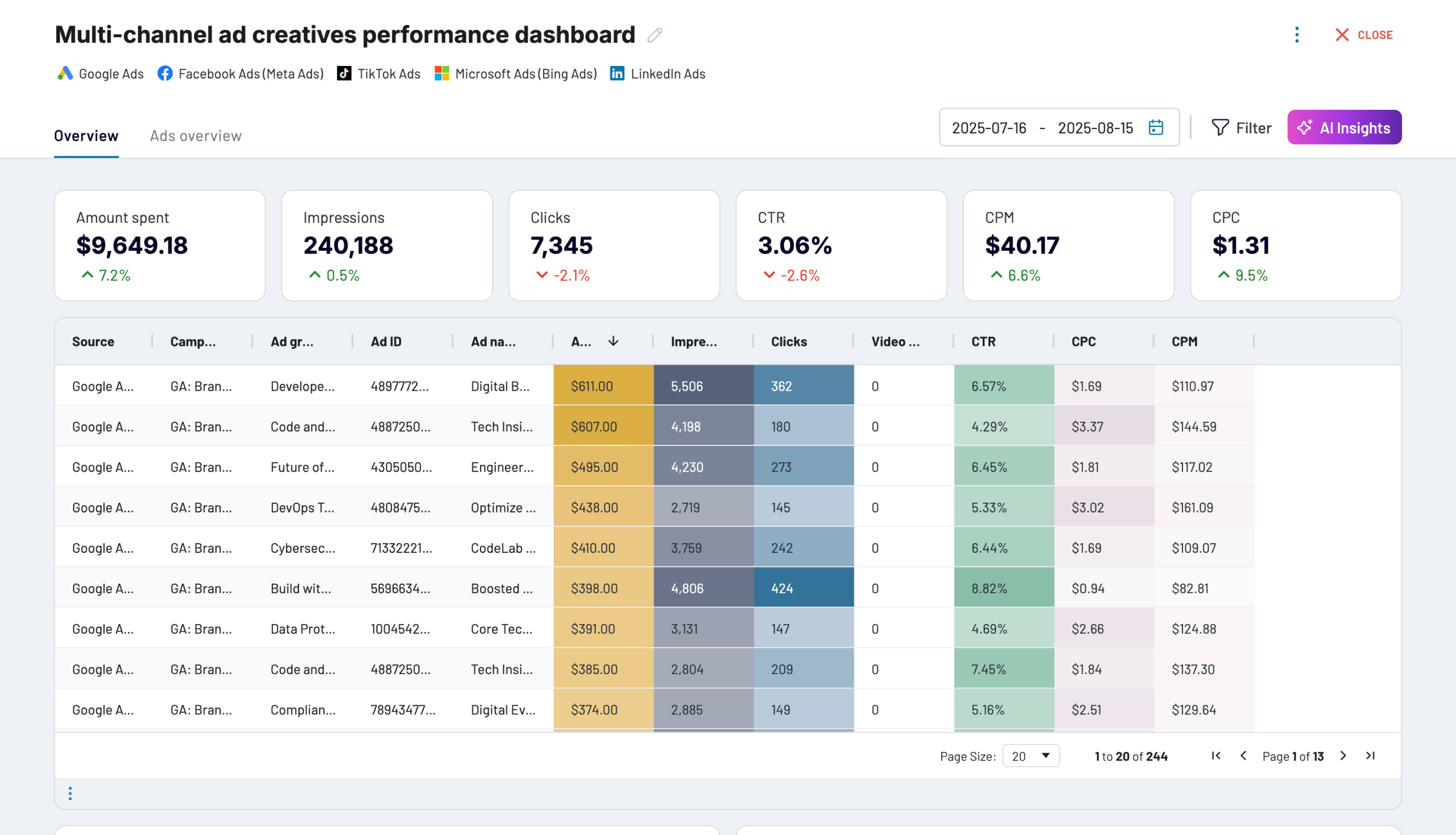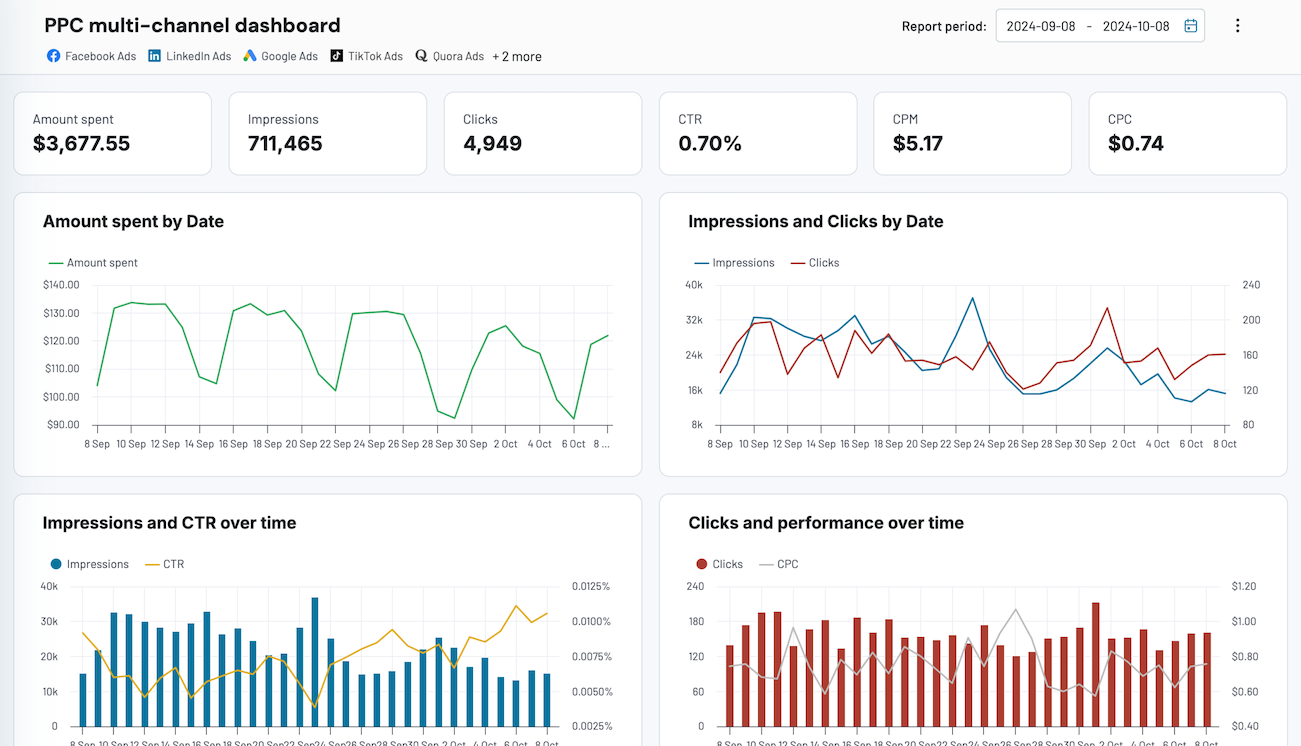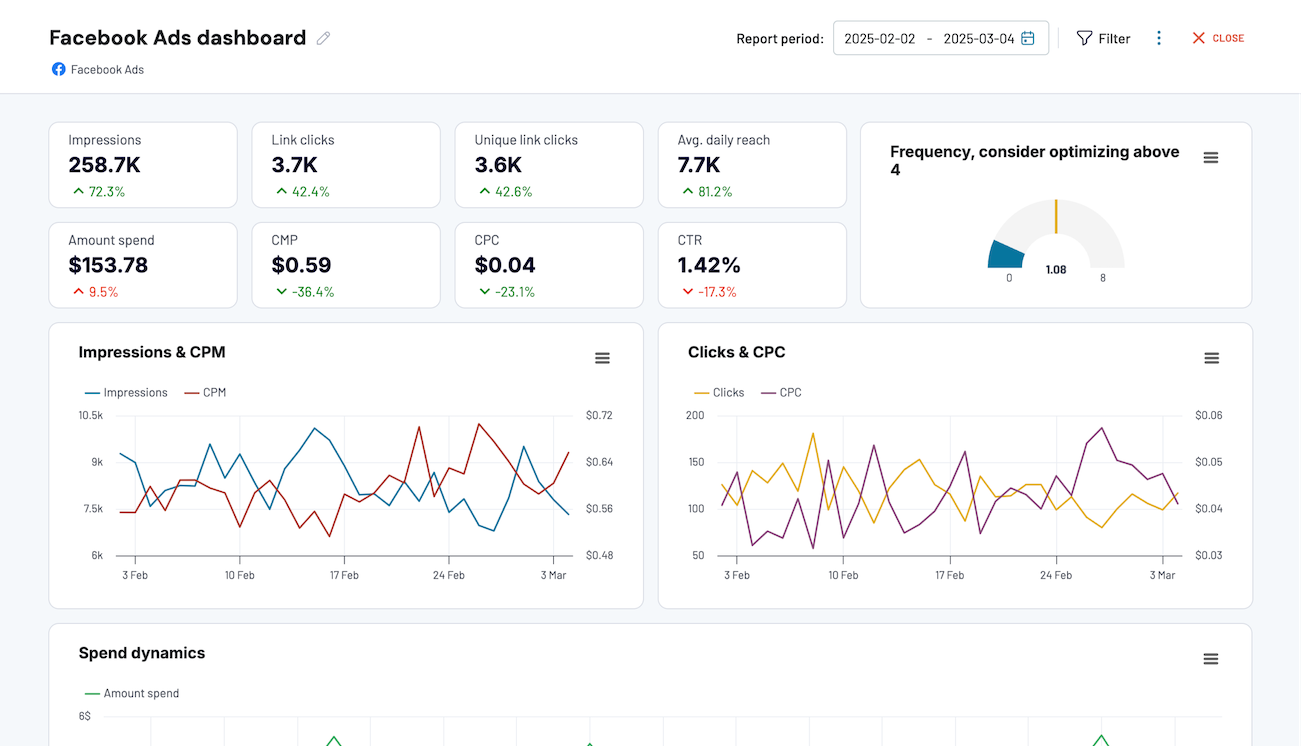What is a CPM?
Cost per mile (CPM) measures the cost to display an ad 1,000 times. This metric helps marketers gauge the cost-effectiveness of reaching potential customers. With CPM, you can compare the relative expense of advertising on different platforms. As a result, marketers can allocate their budgets effectively to maximize ad visibility and brand awareness. The analysis of CPM allows you to identify high-cost but low-performing campaigns.
How to calculate CPM?
To calculate cost per mile (CPM), divide the total cost of your advertising campaign by the number of impressions, then multiply the result by 1,000.
(Total Cost / Total Impressions) * 1000
What is bad CPM?
A bad CPM indicates excessively high costs to reach the target audience. You can get an unfavorable CPM due to many factors. The main ones are inefficient targeting, poor ad placement, and low conversion rates. Benchmarks for what might be considered bad CPM vary by industry. For instance, in highly competitive sectors like finance or insurance, CPMs could reach $50 or more. Meanwhile, the average CPM is around $15-$25 in more general consumer markets. These figures can significantly exceed typical ranges. This means that you need to reassess and optimize your strategy.
What is good CPM?
For a good CPM, you must balance cost efficiency and reaching the desired audience. Generally, a lower CPM is preferable. It indicates that the cost of reaching a thousand viewers is efficient. However, what's considered good can depend on the campaign's goals, target audience, and the specific media platform used. In industries like retail, CPM around $2-$3 is quite good. You can experience higher rates in tech - around $5-$10. For consumer goods, CPM may fall in the $3-$6 range.
Our key templates to track CPM
No such template is available yet.
No worries. Our team will create a template that fits your needs, just tell us more
about your case. It doesn't cost you a penny 😉
Request a custom report
about your case. It doesn't cost you a penny 😉
How to improve CPM?
Optimize Ad Targeting
Refining your audience targeting ensures your ads reach the most relevant users. Use demographic, geographic, and behavioral data to narrow down your audience. You can reduce wastage and lower your CPM by increasing ad relevance and engagement.
Improve Ad Quality
Focus on creating high-quality, engaging ad content. Better ad creative can lead to higher click-through rates (CTR). This, in turn, can improve your ad quality score. As a result, the CPM will decrease since your ads become more competitive in auctions.
Leverage A/B Testing
Regularly test different aspects of your ad campaigns. These include ad formats, images, and copy. A/B testing helps identify the most effective elements. This will let you make necessary optimizations that can reduce CPM. Focus on the components that yield the best performance and engagement rates.


















